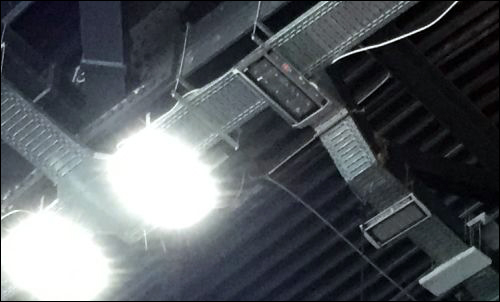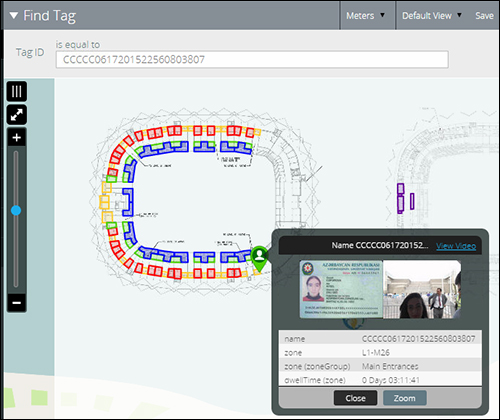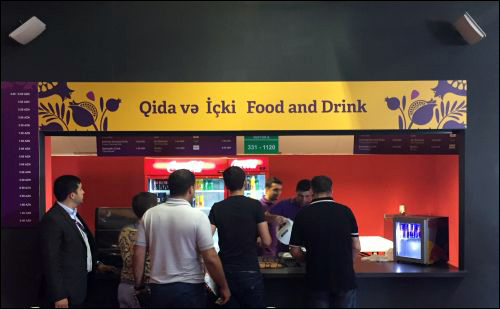When the estimated 250,000 visitors attended the first European Games held in Baku, Azerbaijan, RFID tags built into their tickets enabled event organizers to track their locations across three of the main venues.
The system employed Mojix‘s STAR technology and ViZix IOT software platform, which enabled the security and surveillance systems provider, Main Development, to ensure that individuals could be found if needed, based on their last known location, and that no one entered an unauthorized area.

The first European Games included 6,000 athletes from 50 European countries competing in 20 events, such as basketball, water polo, mountain biking and gymnastics.
One of the Azerbaijan government’s security issues related to making sure that none of the attendees—there were up to 60,000 on any given day of the two-week event—entered an area in which they were not permitted. Especially of concern were the VIP areas in which dignitaries and world leaders might be located, explains Peyman Askari, Main Development’s project director. Typically, tracking individuals’ locations once they enter the main gates is difficult, and the only way to protect the VIP area would have been to manually confirm authorization based on the information printed on tickets.
The company opted for an RFID solution that would provide location-specific information without requiring any effort on the part of attendees, Askari says, rather than a proximity system that would necessitate individuals to present their tickets or ID cards to a reader. Prior to the games, Main Development installed a solution consisting of Mojix’s STAR receiver and antennas (to receive tag transmissions), as well as eNodes (to send transmissions to tags). The technology was installed at three of the six venues: the Olympic Stadium, the National Gymnastics Arena and the Crystal Hall Arena. The RFID system, Main Development determined, would be of most value at the three largest venues, where most visitors go, whereas smaller venues did not require as much location-specific attendee data.
“Safeguarding the VIP area [in the three venues] was the primary concern,” Askari says. Another top concern was to safeguard athletes and general attendees, while he adds that surveillance tracking—knowing where a person of interest was last seen within the venues—was an important feature for Main Development.
Mojix provided its Secure and Safe Event Experience solution, which is based on its ViZix IOT platform, according to Scot Stelter, Mojix’s senior director of product marketing. The RFID company recommended the integration of RFID data with the video-management system, Askari says, so that the location of a specific RFID tag ID could be linked to video surveillance of that same spot. Main Development had initially intended to offer the two systems independently, but was convinced that the integration would be a good idea.
Those buying tickets to the event had two options: buy the ticket online and receive it in the mail, or purchase and print the ticket onsite. Kiosks were set up for attendees to use when they arrived. Each guest’s passport or government ID was first scanned at a kiosk, and identification information was then extracted from it via optical character recognition. The kiosk also took the visitor’s photo, which was stored in the software and linked to the unique ID number encoded to the ultrahigh-frequency (UHF) RFID tag embedded in the paper ticket. Additionally, the tag ID was linked to the passport-based data, as well as access authorization, such as to VIP areas, in the Secure and Safe Event Experience software on Main Development’s database. To protect privacy, Stelter notes, only the unique ID number on the ticket was tracked, while the individual’s name was accessible only to a very few authorized security staff members.
The eNodes sent transmissions that acted as exciters for the passive tags (at a range of up to 30 feet), each of which responded by transmitting its own unique ID. That transmission was captured by the STAR receivers. According to Stelter, these devices are, on average, 4,000 times more sensitive than the next most sensitive reader and 6,000 to 50,000 times more sensitive than all other standard UHF RFID readers, enabling them to have a long read range. A total of 1,400 STAR receiver antennas were installed at strategic locations throughout the three venues, including at the venues’ entrances and in front of concession stands. Stelter did not provide the total number of receivers or eNodes installed.
Upon reaching the venue entrance, a visitor handed his or her ticket to a staff member there, who looked at the ticket and told the attendee where his or her seat was located. While that ticket was being examined by a European Games staff member, it was also being read by the STAR receiver, which forwarded the ID to the software, where that individual’s authorized area was compared with that person’s actual location. In the event of a discrepancy, security personnel would view an alert in the software that also displayed the guest’s photo. They could then view camera footage of the area, proceed to that location (identified on a map of the venue) if they deemed it necessary, and talk to that individual.
The system served to provide a visitor’s last known location rather than real-time tracking data, Stelter says. It also offered analytics capabilities, so that if a problem occurred with a specific guest, the security staff could review the route that person took.
There were no major security breaches during the games, Askari reports, which may or may not have been the result of the technology’s deployment. However, in addition to having the potential to thwart problems (since individuals knew that their locations were being tracked), the system also enabled the better management of security personnel, since it displayed the number of attendees located at a given location, thereby enabling security to dispatch staff members only to places where they were needed.

In one incident, Askari recalls, European Games personnel became aware of an individual who was recording the athletic events underway and selling those videos online. The organization was able to identify that visitor, then used the Mojix system to determine where he was located, based on both his last RFID tag read and associated video footage. Employees could thus go to that location, find the guest and speak to him about his activities.
According to Stelter, the tag read rate was closer to 100 percent when visitors entered their seating area, because it was at that moment that they removed their ticket from a pocket, wallet or purse, and held it out to staff members. The tickets’ tags also read well at concession areas, he says, but at a slightly lower rate.
“The use of RFID technology was a little bit ambitious,” Askari says, though he was pleased with how effectively it worked. “If something bad happens, you can always use the technology to trace back that event. But you never want anything bad to happen… Everything went off without a hitch.”


